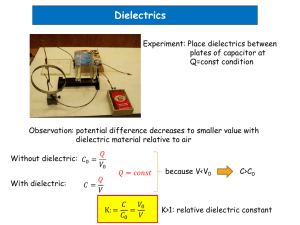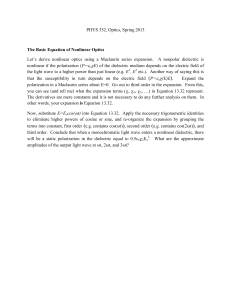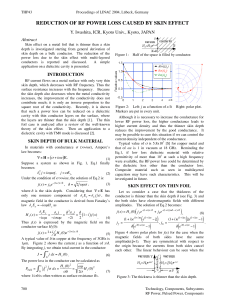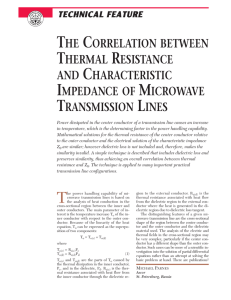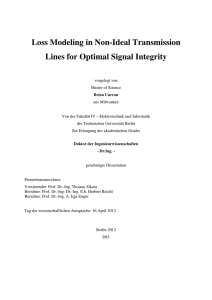Document 13650386
advertisement
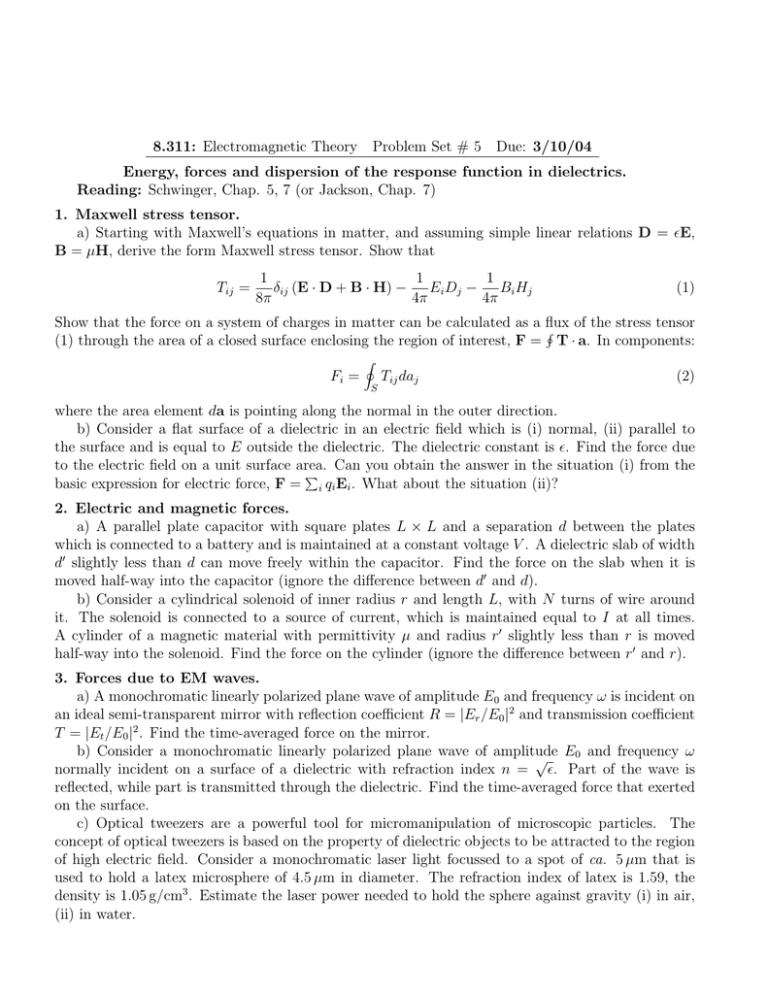
8.311: Electromagnetic Theory Problem Set # 5 Due: 3/10/04 Energy, forces and dispersion of the response function in dielectrics. Reading: Schwinger, Chap. 5, 7 (or Jackson, Chap. 7) 1. Maxwell stress tensor. a) Starting with Maxwell’s equations in matter, and assuming simple linear relations D = �E, B = µH, derive the form Maxwell stress tensor. Show that Tij = 1 1 1 δij (E · D + B · H) − Ei Dj − Bi Hj 8π 4π 4π (1) Show that the force on a system of charges in matter can be calculated as a flux of the stress tensor � (1) through the area of a closed surface enclosing the region of interest, F = T · a. In components: Fi = � S Tij daj (2) where the area element da is pointing along the normal in the outer direction. b) Consider a flat surface of a dielectric in an electric field which is (i) normal, (ii) parallel to the surface and is equal to E outside the dielectric. The dielectric constant is �. Find the force due to the electric field on a unit surface area. Can you obtain the answer in the situation (i) from the � basic expression for electric force, F = i qi Ei . What about the situation (ii)? 2. Electric and magnetic forces. a) A parallel plate capacitor with square plates L × L and a separation d between the plates which is connected to a battery and is maintained at a constant voltage V . A dielectric slab of width d� slightly less than d can move freely within the capacitor. Find the force on the slab when it is moved half­way into the capacitor (ignore the difference between d� and d). b) Consider a cylindrical solenoid of inner radius r and length L, with N turns of wire around it. The solenoid is connected to a source of current, which is maintained equal to I at all times. A cylinder of a magnetic material with permittivity µ and radius r� slightly less than r is moved half­way into the solenoid. Find the force on the cylinder (ignore the difference between r� and r). 3. Forces due to EM waves. a) A monochromatic linearly polarized plane wave of amplitude E0 and frequency ω is incident on an ideal semi­transparent mirror with reflection coefficient R = |Er /E0 |2 and transmission coefficient T = |Et /E0 |2 . Find the time­averaged force on the mirror. b) Consider a monochromatic linearly polarized plane wave of amplitude √ E0 and frequency ω normally incident on a surface of a dielectric with refraction index n = �. Part of the wave is reflected, while part is transmitted through the dielectric. Find the time­averaged force that exerted on the surface. c) Optical tweezers are a powerful tool for micromanipulation of microscopic particles. The concept of optical tweezers is based on the property of dielectric objects to be attracted to the region of high electric field. Consider a monochromatic laser light focussed to a spot of ca. 5 µm that is used to hold a latex microsphere of 4.5 µm in diameter. The refraction index of latex is 1.59, the density is 1.05 g/cm3 . Estimate the laser power needed to hold the sphere against gravity (i) in air, (ii) in water. 4. Energy balance in a conductor. A monochromatic linearly polarized wave of frequency ω is normally incident on a surface of a conductor characterized by ohmic conductivity σ. ¯ outside the conductor. How much of the a) Calculate the time­averaged Poynting vector S electromagnetic power incident on the conductor is reflected back? b) Calculate the time­averaged Poynting vector inside the conductor. Show that the divergence �S̄ is nonzero. Compare it with the Joule heat j · E dissipated within the conductor. 5. Memory function. Consider the nonlocal (in time) connection between D and E, D(t) = E(t) + � +∞ G(τ )E(t − τ )dτ (3) −∞ with G(τ ) appropriate for the single resonance model �(ω) = 1 + ωp2 (ω02 − ω 2 − iγω)−1 a) Convert the nonlocal relation between D and E into an instantaneous relation relation involving � derivatives of E with respect to time, D(t) = E(t) + n≥0 gn ∂ n E/∂tn . Relate the coefficients gn with the Taylor series for �(ω). Evaluate the terms explicitly up to at least ∂ 2 E/∂t2 . b) Find the dispersion relation of EM waves in a dielectric described by the single resonance model. Schematically plot ω(k) in the limit of low dissipation γ � ω0 . Find the group velocity vg and plot it versus ω. 6. Kramers­Kronig relations. a) Use the Kramers­Kronig relations to obtain a sum rule ωp2 = 2�∞ ω Im �(ω)dω π 0 (4) b) Use the relation �(ω) = �(ω ∗ )∗ and the analyticity of �(ω) in the complex half­plane Im ω ≥ 0 to prove that on the positive imaginary axis �(ω) is real and monotonically decreasing away from the origin toward unity at ω = +i∞, provided Im �(ω) ≥ 0 for real positive frequencies. c) With the assumption that Im �(ω) vanishes for finite real ω only at ω = 0, show that �(ω) has no zeros in the upper half ω plane. d) Write down a Kramers­Kronig relation for 1/�(ω) and deduce a sum rule similar to (4) but as an integral over Im [1/�(ω)].

